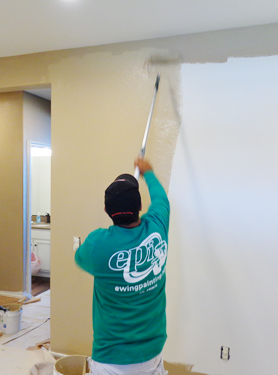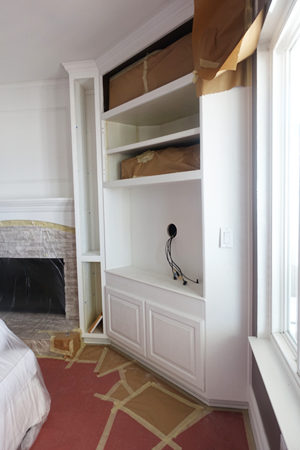What To Expect With Your Interior House Painters
The ins and outs
Are you thinking of getting the interior of your home painted? Here are 4 basic steps you should expect from your professional painting contractor. This is for painting standard walls and baseboard procedures.

2. Preparation: We begin the project by immediately protecting the flooring in the work area and the paths to get to the work area. Most common protection used is canvas drop cloths or plastic. We have also used Ram Board to protect delicate wood flooring – this is a thick paper that can withstand light impacts and is also water resistant. After we have protected the floors we begin the standard prepping practices of removing switch plates, masking fixtures, sanding, caulking, repairing damaged drywall areas and priming the areas needed.

4. Finishing: At or near completing the painting process a painter will go back through inspecting the work completed, touching up where it needs it. Another painter might start removing equipment and begin clean up. After all overhead masking is removed, we will then pull the floor protection. We vacuum all flooring in and around the work area and wipe down where it is needed with a soft cotton rag. All left over paint is sealed in it’s labeled cans, wiped down and marked identifying the color and area applied. All left over paint is given to the owner.
That’s it, I wish you much success with your interior painting project.
1. Set up: We will need a designated area so we can neatly store our equipment and supplies. This can be in a garage, spare room or even in a covered area in your back yard. Standard equipment used in a basic interior are ladders, sanding machines, vacuums, rollers, brushes and extension polls. The basic materials are the paint being applied, rags, caulking, sand paper and primers. The “shop” area is normally a 5×8 area covered with plastic and/or drop cloths depending on the flooring.

3. Painting: We begin the painting process with a brush and mini roller, cutting the walls to the ceiling, fixtures and around all openings like windows and doors. We use the mini roller to roll away from the area not receiving paint for splatter control. Another painter will start the rolling process, completing the wall as they go. All walls receive two coats of the desired finish. After all walls are complete and dry to touch we cut in the baseboards to the floor, often a two color tone design.


Our Clients Review
No matching videos
